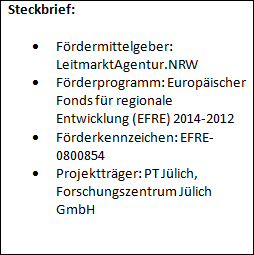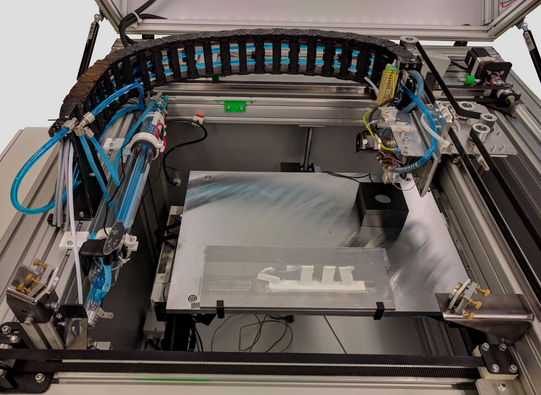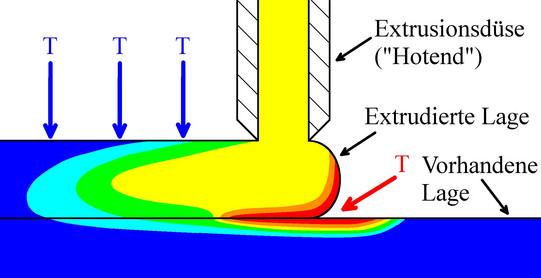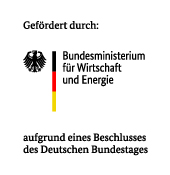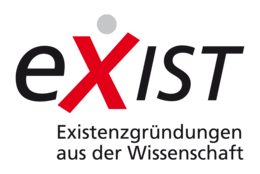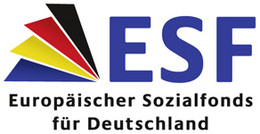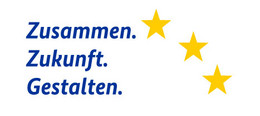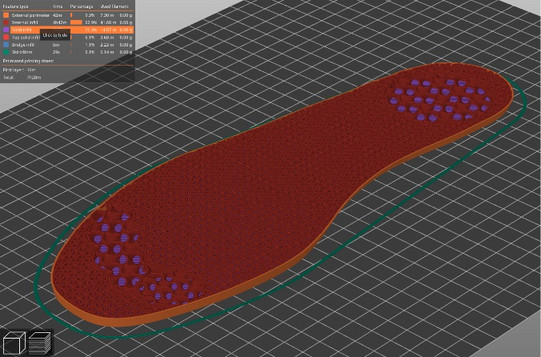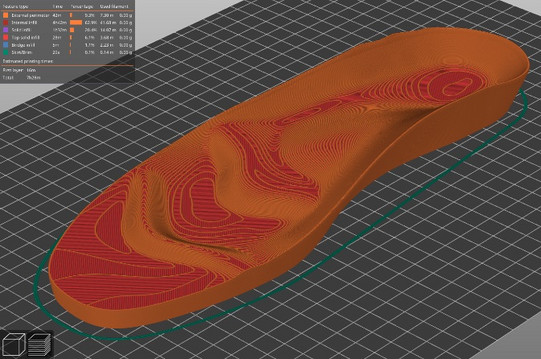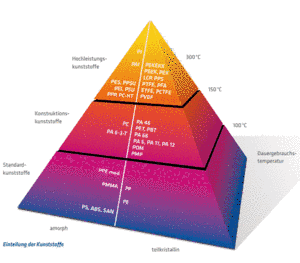LaOnDe - Load carrier on Demand
The aim of the LaOnDe project - Load Carrier On Demand - is the development of additively manufactured, individualized load carriers in the B2B and B2C sectors. In this context, customer- or product-specific load carriers and components are to be produced from recyclable plastics within a short time using the 3D printing process.
The printed load carriers are to be particularly suitable for high-quality industrial goods, e.g. machine and plant components, and bulky goods that cannot be transported using standard load carriers. Until now, these goods have been produced either as very expensive one-offs, which involve high material and/or tooling costs and can take several weeks to develop. Or special solutions are made by hand, usually from wood, which are just as expensive and not always designed for transport and load.
The printed load carriers meet the highest demands in terms of load unit and load securing that meets requirements, efficient and optimized use of raw materials during production, and adaptation to the load geometry and properties, such as surface finish, hardness or stability of the product.
More efficient loading in line with requirements leads to more economical goods transport and a reduction in CO2 emissions. The use of the 3D printing process significantly reduces or even substitutes the use of expensive custom metal or wooden solutions made with a high degree of manual effort, which directly leads to a minimization of costs for employee deployment and warehousing for the company's packaging and shipping preparation departments. Likewise, the cost of designing and manufacturing the custom load carriers is drastically reduced. The discarded load carriers are returned to the raw material cycle in the sense of recycling.
The technological variety of offers of on-demand load carriers for individual packaging solutions is limited, so that LaOnDe gives the logistics industry in NRW the opportunity to position itself with this new concept at an early stage. At the moment, there is no comparable and marketable product available either nationally or internationally. Thus, in the context of this outlined project, the market launch is targeted and the state of NRW profiles itself as a location for innovative approaches in logistics and high technology.
The Machine Elements Department of the Institute of Design and Materials Testing (IKW) supports the cooperation project with its expertise in the field of design during the definition of the working principles, in the preparation of load carrier concepts and design guidelines and, in particular, in the development of granulate feeding and extrusion. Furthermore, it takes over the evaluation of possible granules. Subsequently, the IKW takes over the modeling of charge carrier demonstrators. In the first step, this is done on the basis of a 3D CAD model. This is followed by the creation of charge carriers by means of 3D reverse engineering of a charge element. Finally, the IKW optimizes the topology of the modeled charge carriers. During the testing of the printing system and the validation of the load carrier concepts, the IKW supports the cooperation project with statistical evaluation methods. The IKW supports the project coordination across all work packages.
Development of a 3D printer for the generative production of large-volume components
The printing systems available according to the state of the art are not capable of producing large objects economically due to two significant and as yet unsolved problems. Firstly, the throughput of the filament extruders currently in use is significantly too low to produce large components in an acceptable production time. Another weak point, which also affects extruder technology, is the plastics that can be used according to the state of the art. None of the established printing systems is capable of using economical plastics such as polypropylene (PP for short) and polyethylene (PE for short). However, since large quantities of material are consumed for correspondingly large-volume components, the ability of extruders to process inexpensive plastics is imperative in order to offer an economic advantage over alternative processes. In this context, one of the research objectives of the Machine Elements department is to solve the listed problem by developing a corresponding 3D printing system for the production of large-volume components (up to approx. 2 m³).
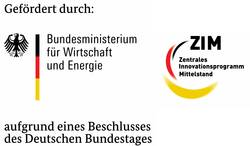
Investigation of the interactions between the process parameters and the component properties in the FLM process.
The safe, application-oriented use of FLM products as structural components requires exact knowledge of the component properties. At the Institute of Design and Materials Testing, the Department of Machine Elements, in close cooperation with the Department of Materials Testing Technology, investigates the influence of the process parameters on both the static and dynamic component properties using the method of statistical design of experiments. At the same time, modern measuring methods are used to investigate the damage mechanisms that set in under operating load. The main objective of the Machine Elements Department is the development and extension of design guidelines for the production- and application-oriented design of FLM products.
Qualification of materials and material concepts for the FLM process
According to the current state of the art, a limited number of different filament materials are available. On the one hand, the Machine Elements Department is pursuing the production of its own filament in order to be able to qualify new materials and material concepts for the FLM process. The focus of this research is on economical standard plastics (PP, PE), bioplastics, short-fiber-reinforced plastics and high-performance plastics. On the other hand, completely new material processing concepts are being researched at the Department of Machine Elements with the aim of reducing costs and increasing process speed.
Optimization and extension of the manufacturing parameters of the FLM process
Based on the results of the research activities in the field of additive manufacturing processes at the Department of Machine Elements, a new requirement profile for the control of the FLM process is created. In this context, on the one hand, an optimization of the manufacturing parameters takes place. On the other hand, new approaches such as the production of selective component properties are analyzed.
Equipment
The Department of Machine Elements owns various 3D printing systems in the area of FLM technology. Starting with commercially available open-source and closed-source systems, which have been internally modified and optimized with respect to the in-house quality requirements and the research goals, up to a self-developed, fully variable 3D printing research system for large-volume components of up to 2 m³, where the greatest possible influence on the manufacturing parameters can be taken. In summary, the following 3D-FLM printing systems are currently available to the Machine Elements department:
- Stratasys Dimension SST 1200es,
- Makerbot Replicator 2X,
- Leapfrog Creatr,
- Ultimaker 2 (from Ultimaker),
- BQ Prusa I3 Hephestos,
- in-house developed 3D FLM research system (for parts up to approx. 2 m³)
MiPe-3D
3D printing of plastics is characterized by particularly high flexibility and versatility. Nevertheless, the field of application is limited. Pushing this limit further is the goal of the MiPE-3D project. In order to ensure the economic viability of the end products, research is focusing on the FDM process, which delivers only moderate component qualities compared to SLS or SLA, but is significantly less expensive. Currently, amorphous thermoplastics are used almost exclusively in this area. Semi-crystalline plastics offer major advantages in some cases. They exhibit better fatigue properties, have good chemical resistance and high impact strength. Although there are also amorphous plastics on the market that exhibit many of these properties, they are only suitable for prototyping due to their high price. Polypropylene and polyethylene, on the other hand, accounting for 20% and 30% of the plastics processed worldwide, are very inexpensive. The major challenge in processing semi-crystalline plastics is the comparatively high shrinkage of the material during cooling and the associated residual stresses and warpage. On the one hand, these lead to unstable manufacturing processes due to extreme warping, and on the other hand to component deviations and reduced component load-bearing capacity.
This is where the department of machine elements in cooperation with 3win Maschinenbau GmbH comes in. While the plastics manufacturing industry develops polypropylenes by means of material modifications, which are adapted to the FLM process and do not show typical semi-crystalline properties, in MiPE-3D a process modification suitable for the material is aimed at. It is investigated whether the formation of distortion and residual stresses can be reduced by means of modified process control. By preheating the previous layer and then abruptly cooling the extrudate, the extrudate temperature should be reduced on the one hand and the heat-affected zone minimized on the other.
This technique could find application in orthopedic technology, which is why rahm Zentrum für Gesundheit GmbH is participating in the project as another partner. If it becomes possible to process polypropylene by means of the FLM process, corsages, for example, could be manufactured on the basis of CAD scans within just a few processing steps.
Please confirm video activation.
After activation, cookies will be set and data is sent to YouTube (Google).
To the Google Privacy Policy
FilChange - Flexible 3D Printing
The "FilChange - Flexible 3D Printing" project involves the sophisticated development of a new type of 3D printer based on the FLM process for the uninterrupted manufacture of products consisting of any number of different plastic materials and colors. This technology enables enormously time-saving and cost-effective production of complex components using a single automated manufacturing process. Unlike other 3D printing systems, the novel 3D printer implements uninterrupted and waste-free processing of a wide variety of plastics. The basis of the technology is formed by the prototypes of a change system, for which a European patent has been applied for by the TU Dortmund, and a newly developed extruder. In addition, various options have been developed for joining the different materials in a component. As part of a grant from the "START-UP university spin-offs" program of the European Union and the state of North Rhine-Westphalia, the 3D printing system will be manufactured and put into operation during the 18-month funding period in order to be able to produce test components in collaboration with development partners.




MedTech Multiprint
The aim of the "MedTech-Multiprint" project is to develop a new type of 3D printer for manufacturing complex hybrid products from various standard and engineering thermoplastics, as well as from high-performance plastics and silicones, in a single uninterrupted production process. The 3D printing system enables highly automated, resource-saving and thus time-saving and cost-effective production. The technology is used, for example, in the medical and orthopedics industry for the production of components for individual aids. The novel 3D printing system is to be developed on the basis of an existing laboratory prototype, which was built and put into operation in the course of the project "FilChange - Flexible 3D Printing" of the ERDF funding program "STARTUP-Hochschul-Ausgründungen NRW". The laboratory prototype is based on a newly developed filament processing module for which the TU Dortmund University has applied for a European patent. With the involvement of the research activities, the prototype of the entire 3D printer is to be designed, built and put into operation so that hybrid products can be manufactured and these can be tested under application conditions.
DiPaFu3D - 3D printed silicone footbeds
The DiPaFu3D research project aims to develop a novel, patient-specific 3D-printed foot bed with integrated partial foot replacement and adjustable hardness ranges within the aid made of silicone, and thus to sustainably improve the care of diabetes mellitus patients.
In some diabetes patients, the disease is often accompanied by diabetic foot syndrome, which results in wounds and gangrene on the feet. Due to the nerve damage that occurs here, the wounds are often discovered late. As a consequence, amputation of dead tissue is often necessary.
For the treatment of diabetic foot syndrome, foot beddings made of plastic foams are currently used to reduce pain and slow down the progression of wound formation. However, the following aspects can be identified as disadvantages of this type of treatment:
- limited degree of individualization and thus no optimal medical treatment of patients
- partial foot replacement in case of performed amputations cannot be directly integrated into the foot bedding due to limited manufacturing possibilities
- many manual manufacturing steps are necessary, consequently no reproducible quality of the products is possible
The additive manufacturing of a novel footbed by means of 3D printing technology using the cost-effective FLM process from an industrially suitable and certified silicone can remedy the aforementioned disadvantages. Due to its properties and characteristics, additive manufacturing is particularly suitable for the production of components in small quantities with a high degree of individualization as well as high geometric complexity. In this way, a solution to the aforementioned weaknesses of conventional manufacturing can be achieved. Another advantage, which should not be neglected, compared to the conventional subtractive manufacturing process is the more efficient use of raw materials.
As part of the above-mentioned research project in collaboration with the Tingelhoff medical supply company in Dortmund, a new test rig for processing 2-component liquid silicones is being developed and built at the Machine Elements Department. This will be used to manufacture the newly developed, innovative foot beddings. At the same time, a guideline is also to be created to enable implementation of the footbed production in a digital process chain.

Project partners:

Grantor:
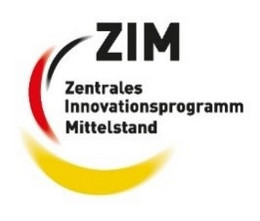
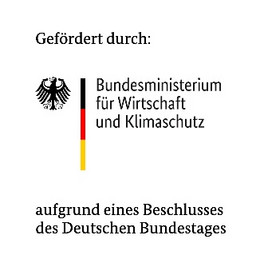
Additive manufacturing processes
In the field of additive manufacturing, there are many different manufacturing processes (e.g. 3DP, FLM, SLM,...). The research focus at the Department of Machine Elements is the Fused Layer Manufacturing process (FLM, also known as FDM®). In the FLM process, webs of molten plastic are applied layer by layer by means of a nozzle. The driven axes of the system move the nozzle along the freely selectable component geometry, so that the virtually post-processing-free component is available at the end of the process. Due to the low demands on the starting material, a wide variety of thermoplastics with different properties can be used. For example, elastic, biodegradable, fluorescent, conductive, soluble or tribologically improved materials can be used and are already available. In addition to the freely selectable geometry, the use of these materials allows components with maximum functional integration to be produced fully automatically in a single operation. Another advantage that further distinguishes the FLM process from established 3D printing processes such as SLM (selective laser melting) is the incorporation of lightweight structures in closed bodies. Since no powder (cf. SLM process) is enclosed, mechanically loaded structures can be designed as hollow bodies with an internal lightweight structure (e.g. biologically inspired honeycomb structure).






![[Translate to English:] [Translate to English:]](/storages/me-mb/_processed_/4/2/csm_Wegweiser_FGME_e510c66777.png)
![[Translate to English:] [Translate to English:]](/storages/me-mb/_processed_/b/d/csm_lehre_teaser_bild_01_cf492501f3.png)
![[Translate to English:] [Translate to English:]](/storages/me-mb/_processed_/4/1/csm_forschung_teaser_de51146ba7.png)
![[Translate to English:] [Translate to English:]](/storages/me-mb/_processed_/5/3/csm_Kontakt_Teaser_09cba68a29.png)
![[Translate to English:] [Translate to English:]](/storages/me-mb/_processed_/c/b/csm_Zahnrad_vor_der_Freiflaeche_03_5703a51c08.png)
